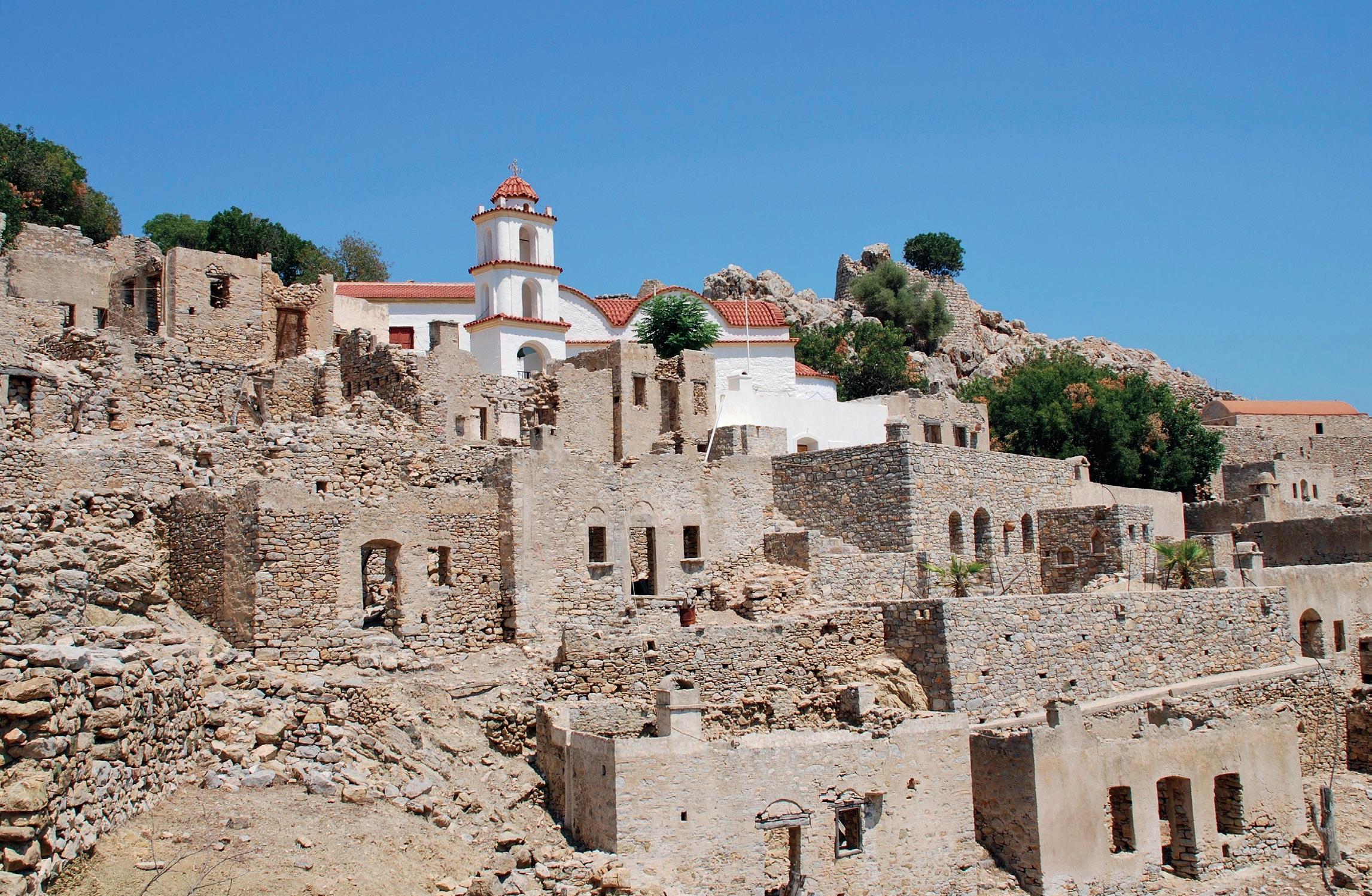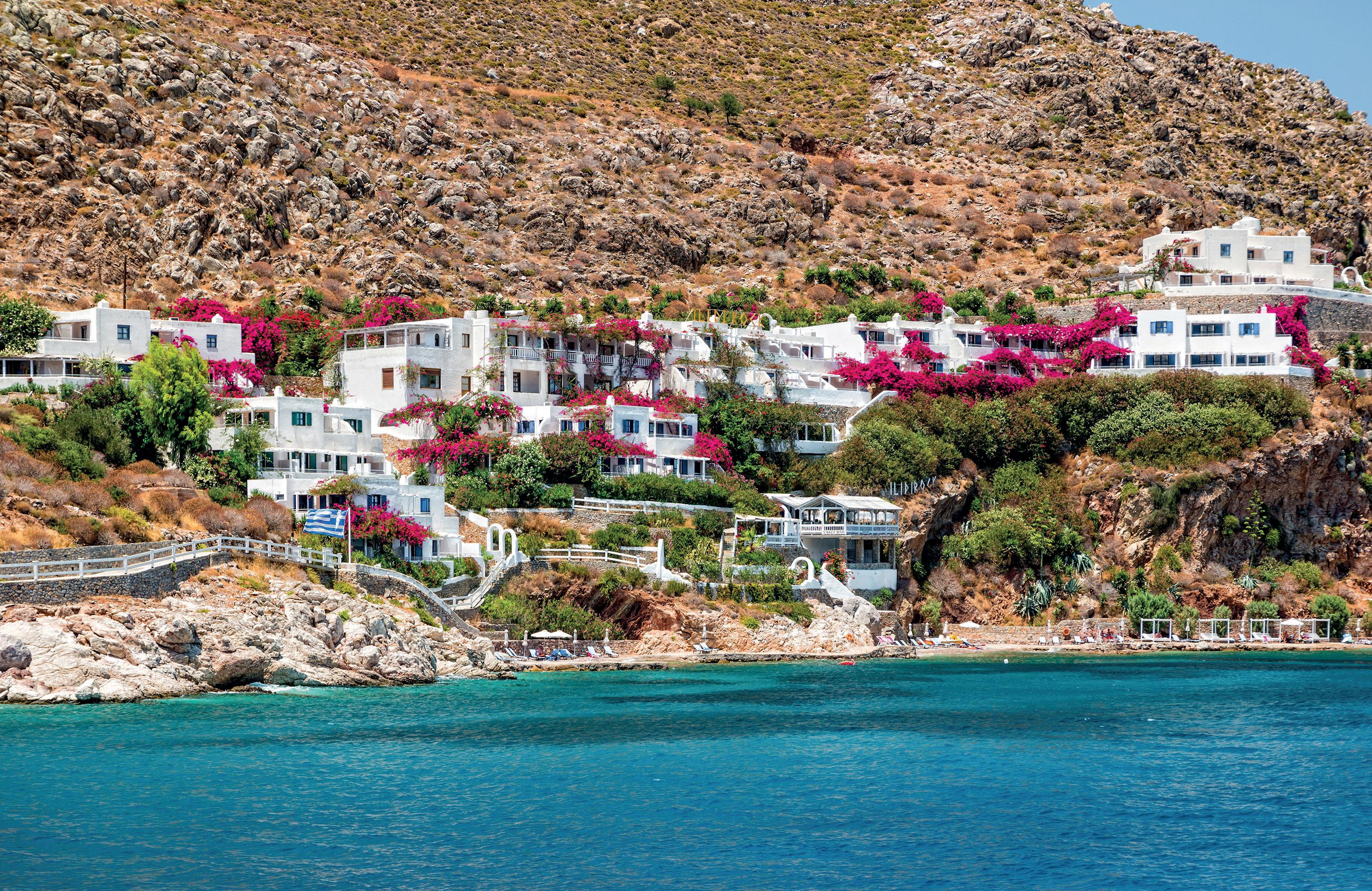
4 minute read
IS TILOS Greece’s island?greenest
Imagine a Greek island whose white-washed houses were powered only by wind and sun, where dolphins danced in its sapphire seas, and orchidstudded trails meandering across magical meadows and mountains were more plentiful than roads. Welcome to Tilos. Yes, it might be the island none of us have heard of but that, perhaps, is its appeal. Part of the remote Dodecanese archipelago that hugs the Turkish coast, tiny S-shaped Tilos stands serene and solitary between hectic Rhodes and Kos. There’s no airport, it’s too far from its larger neighbours for day trips by boat, and mainland Greece is an epic 15-hour ferry journey away. So the island quietly carves its own path –one that over the past few decades has had a refreshingly green hue.
“There are no night clubs, water sports or high-rise hotels. You come here for the peace,” says Ian Hogg, a British resident who first visited Tilos 28 years ago, got hooked, and in 2006 gave up a secure job in the UK to move here permanently.
Advertisement
He now works as a rep for Sunvil and also helps out on the quay at the island’s port, Livadia. “People enjoy experiencing an authentic Greek island that’s free from mass tourism. When they get home, they often don’t tell anyone as they want Tilos to themselves!”
To The Future
With its Byzantine fresco-daubed monasteries (catch their saint’s day feasts when the whole island parties), pocket-sized chapels standing sentinel on thymescented mountains, and valleys lush with olive and oak trees, things tick along here much as they have for centuries. But look a bit deeper and you’ll discover that far from being stuck in its past, Tilos is framing its future in ways that are making it a blueprint of sustainability.
For starters, the entire island is designated a nature reserve, home to 100-plus identified species of birds, 46 of them threatened. Keep your binoculars poised to spot Bonelli’s eagle, long-legged buzzard and Mediterranean black shag; look out for rare monk seals and turtles too. This bountiful biodiversity is partly thanks to the island’s fertility (due to a network of underground springs) and tiny population (850 at the way, requiring that the ban be continuously renewed,” says Ian. “So Aliferis simply turned the whole island into a nature reserve. It was a stroke of genius!”
Another coup was to make Tilos the first island in Greece to run last count), but also to its ecominded late mayor, Tasos Aliferis.

The mayor, a keen ornithologist, took the hugely audacious step of banning hunting, something almost unthinkable in Greece where country-dwelling males are pretty much inseparable from their rifles. It wasn’t easy. “The officials put obstacles in the almost completely on renewable energy. Until then, it had relied on energy brought via underwater cables from Kos, but these often got cut and power surges and blackouts were frequent. Given Tilos’ abundant sun and wind it made sense to instead power its homes with solar panels and a wind turbine.
With the help of European money, Tilos installed an electricity production and storage plant that now meets over three quarters of the island’s energy requirements. All homes have solar panels to heat their water, buses and other councilowned vehicles are electric, and street lights and bus information boards are solar-powered too. Outsiders are watching with interest, says Ian. “We’ve had visitors from other Greek islands, and also from abroad, including Japan.”
Aliferis died in 2012, but his mayoral mantle has been assumed by another equally enthusiastic environmentalist, Maria Kamma. Two years ago, with EU help, she decided to tackle another issue that challenges islands worldwide: waste. Refuse that had previously gone into landfill was recycled, reused or composted. “Households have their rubbish collected three times a week and it’s then sorted,” says Ian. “Collections from restaurants are three times a day. We measured our waste recently and found that 91.7 percent was being recycled. We believe that’s a record for an island. Eventually we hope to achieve zero waste.”
Tilos has been transformed. Gone are the ubiquitous wheelie bins on every street corner. The landfill site has closed, and is now where a private waste management company sorts the waste. The island’s schools, in the 1990s tottering as the island’s population dwindled to just 500, are thriving. Electric-powered public buses run regularly and on time. Even the cats, a feature of every Greek island, are healthier, thanks to an initiative to get them neutered, which keeps numbers under control.
Ancient Routes
This can-do green ethos attracts a certain kind of tourist –mostly nature-loving walkers or birdwatchers, says Ian. The best time to visit is April, May and September when daytime temperatures are a comfortable 20-something. In spring the island is refreshingly green, illuminated with Aegean-blue hyacinths, poached egg-shaped rock roses and holy orchids. In autumn, the mountains turn russet gold and the sea is warm for swimming. Footpaths follow trails that were once used by farmers to reach their crops, planted on the web of stone-built terraces that crisscrosses the island. “The network of paths is so extensive you could spend a fortnight hiking and do a different walk every day,” says Ian. Navigating them is easy, thanks to signposting by local volunteers, first-rate maps and an excellent walking guide, by another Brit, Jim Osborne.

Trails lead from Livadia along the coast in both directions; hike north to Lethra’s shingle beach (go early to bag the shade of its solitary tamarisk tree) or south to spring-fed Despoti Nero. Equally lovely is the ancient cobbled trail through the terraces up to Mikro Horio (Small Village), founded up in the mountains as protection against pirates.
Apart from its church, it’s now largely a ghost town with oak trees sprouting from its ruined houses. It’s worth returning in the evening to visit its bar, known as Night Club, inside a restored ruin, which in the summer opens from 10.30pm through to 6am. A free shuttle bus runs there hourly from Livadia so if you’re not up for an all-night session you can still pop up for a quick nightcap.
Tilos’ tiny capital is Megalo Horio tiny capital is Megalo Horio (Big Village), whose Persil-white cubed houses and narrow alleys cling to the limestone slopes
Tilos’
(Big Village), whose Persil-white cubed houses and narrow alleys cling to the limestone slopes. Stomp up to the stone-built Kastro (castle), where the Knights of St John had a base until Tilos fell to the Turks in the 16th century, or if that feels too energetic, join the locals for an ouzo at the artifactpacked Palio Meraki kafeneion

The shiny new museum houses an unusual exhibit: the bones of mastodons (dwarf elephants) that were discovered in a cave near here. The theory goes that the elephants probably roamed Asia Minor, to which Tilos was










